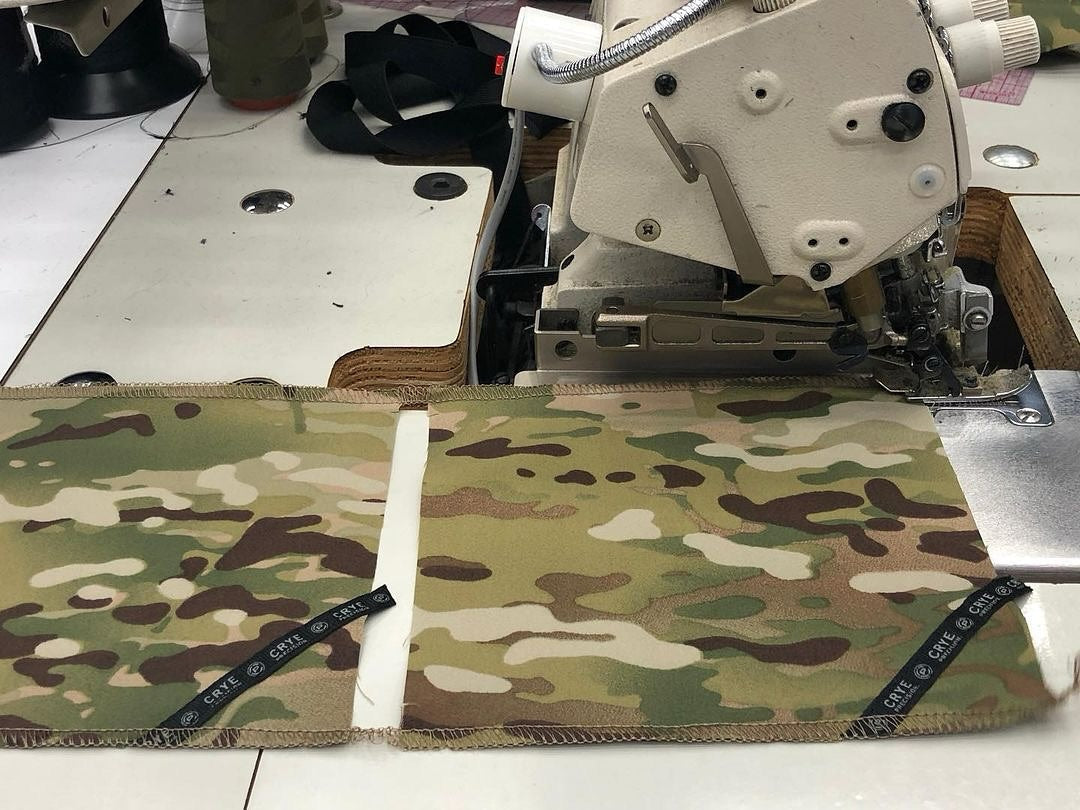Innovations in Camouflage Textiles
Camouflage textiles evolves. Yesterday, it relied on simple patterns. Today, it depends on science and nanotechnology. Modern sensors scan every move, every thermal trace, every visual signature.
To remain unseen, armies and civilians alike turn to fabrics that react, block, absorb. Camouflage textiles no longer just imitate nature. They change, they adapt, they deceive.
1. Adaptive Textiles: When Camouflage Moves with the Environment
Uniforms are no longer static. They become responsive. Adaptive textiles adjust their appearance in real time.
Electrochromic technology
A single electrical impulse. The color shifts. The electrochromic fabric alters its optical properties in seconds. A soldier in the forest switches his gear to desert tones without changing clothes. Time saved. Discretion gained.
Thermochromic technology
The fabric reacts to temperature. In the cold, it turns pale. In the heat, it darkens. It follows the climate like a second skin. The result: efficient camouflage in shifting landscapes.
Nanotechnology applied to camouflage
At the microscopic level, particles bend light. Some reflect, others absorb. The textile blends into the background, like the skin of a chameleon. Extreme precision. Perfect illusion.
2. Infrared and Anti-Thermal Fabrics: Outsmarting Modern Sensors | Camouflage Textiles
The threat is no longer only in the human eye. Drones, thermal cameras, satellites track heat and infrared signatures. To counter, anti-thermal and infrared fabrics are essential.
How do anti-thermal fabrics work?
Body heat escapes naturally. Unprotected, it becomes a visible signature. Insulating layers block the flux. Graphene spreads the heat. Ceramic fibers stop it. On a thermal camera screen, the human silhouette nearly vanishes.
Infrared textiles
Waves emitted by the body expose position. Specialized fabrics block or absorb them. The soldier remains unseen, even in the scope of advanced drone sensors.
Operational example
A unit advances at night. Drones sweep overhead. Without these textiles, every move lights up in infrared. With them, the mission proceeds quietly. Stealth becomes total.
3. Civilian Applications: Camouflage Beyond the Battlefield
These technologies are not confined to armies. They move into civilian life. Hunters, hikers, and security forces benefit.
Hunting and wildlife observation | Camouflage Textiles
A hunter waits, still. His clothing adjusts its pattern with the season. Winter, it whitens. Summer, it greens again. Game notices less. The approach grows silent and invisible.
Survival and outdoor activities | Camouflage Textiles
Bushcraft enthusiasts need strength and durability. These textiles provide both. They shield against cold, rain, wind. They also help vanish into the landscape.
Security and law enforcement | Camouflage Textiles
Special forces operate in cities. The fabric absorbs heat. It reduces contrast. In the shadows, the operator becomes an elusive shape. Psychological edge. Tactical superiority.
4. Camouflage Textiles and Sustainability: An Ethics of Discretion
Innovation isn’t only about performance. It’s about responsibility. Camouflage textiles shift toward eco-friendly solutions.
Biodegradable fibers
Organic cotton. Hemp. Linen. These natural fibers replace polluting polymers. After use, they decompose without trace.
Recycled fibers
Polyester made from salvaged plastics becomes a new fabric. Camouflage nets. Field jackets. Every garment transforms waste into resource.
Responsible processes
Eco-friendly dyes consume less water. Digital printing reduces chemical waste. Factories lower their carbon footprint.
👉 A real example: Nutsof develops camouflage gear with sustainable methods. Performance and responsibility aligned.
5. The Future of Camouflage: Toward Intelligent Invisibility
Textiles will soon be more than camouflage. They will be intelligent.
-
Connected uniforms: communicating with sensors to adjust patterns automatically.
-
Energy textiles: integrating flexible batteries to power radios and detectors.
-
Multispectral suits: invisible to the eye, radar, and infrared alike.
The soldier of tomorrow will wear fabric armor. Invisible. Resistant. Connected.
FAQ | Camouflage Textiles
1. What is an adaptive textile?
A fabric that changes its color or pattern according to the environment, using electrochromic or nanotech solutions.
2. How do anti-thermal fabrics block body heat?
They rely on insulating layers and materials like graphene to diffuse or trap body heat, reducing thermal detection.
3. Can civilians use these textiles?
Yes. Hunting, photography, survival, and outdoor activities already benefit.
4. Can these textiles be eco-friendly?
Yes. With biodegradable, recycled fibers and clean processes, they turn sustainable.
5. What’s the next step for camouflage?
Intelligent, connected uniforms, designed to make a soldier invisible across multiple spectrums.
Conclusion | Camouflage Textiles
Camouflage has changed face. More than a pattern, it is now a hybrid technology where textiles, electronics, and ecology meet. Armies gain multispectral stealth. Civilians benefit from comfort and safety. The planet moves toward sustainability.
The future belongs to intelligent, responsible camouflage textiles. A revolution already underway.
👉 Explore the latest innovations in camouflage with Nutsof.
Best regards,
The Nutsof Team
Advanced Camouflage & Defense Solutions
🌐 www.nutsof.com
Follow us on Facebook and Instagram for the latest in advanced military camouflage technologies.


